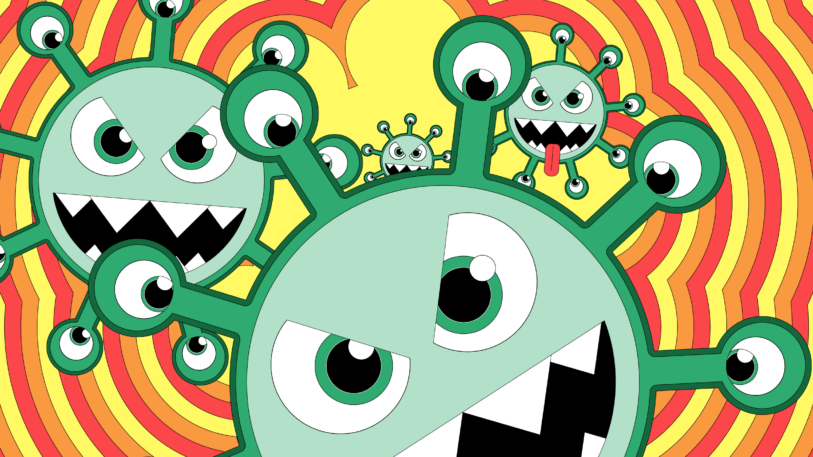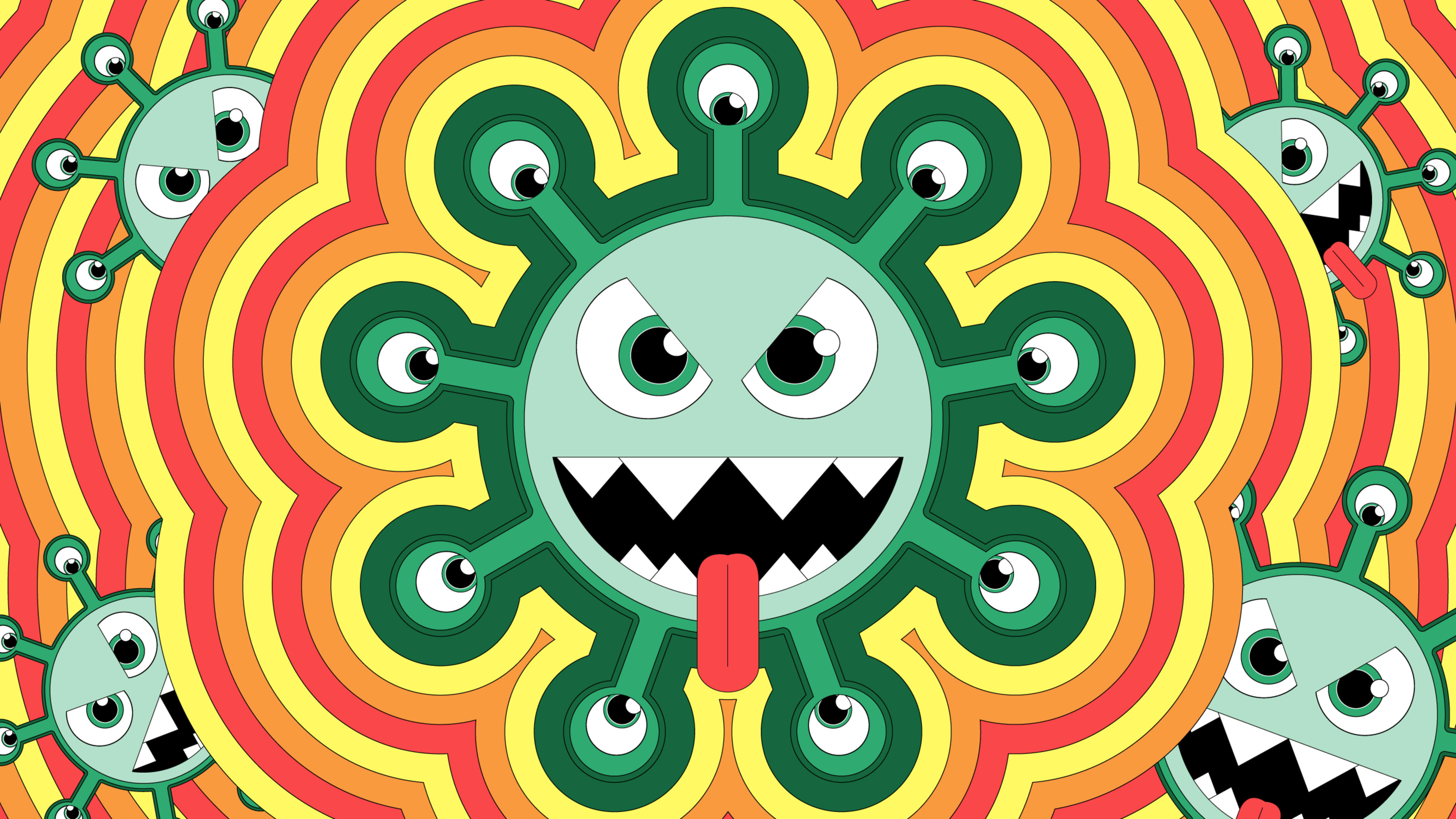When it comes to combating COVID-19, the flu, and other diseases, we can learn a thing or two from Mr. Mucus, the Mucinex guy.
Yes, that guy, the disgusting animated blob of mucus that Reckitt Benckiser uses to promote its popular over-the-counter expectorant. But really, any humanized depiction of disease—whether depression or an overactive bladder—can improve people’s willingness to comply with health recommendations such as getting screened and seeking intervention.

It’s an especially important time to improve health compliance strategies. We are facing an unprecedented “tripledemic” with large ongoing surges of the coronavirus, influenza, and respiratory syncytial virus, known as RSV. Vaccine rates are nowhere near where they should be for COVID-19 and the flu, only compounding the issue. As of this writing, only 13% of those eligible had received the more potent bivalent COVID-19 booster shot.
More broadly, the World Health Organization’s data shows that the top three global causes of death (as of 2019) are from preventable disease: heart disease, stroke, and chronic obstructive pulmonary disease, or COPD. So we need to pull out all the stops to get people to take health-related action, and humanized depictions of disease seem to work particularly well.
Why?
It turns out that anthropomorphizing anything—that is, giving it human characteristics to figuratively bring it to life—evokes a strong response in humans. That’s because we innately understand what it is to be human, and instinctively feel psychologically closer to other humans or objects with human characteristics. It’s why we’re so close to our pets or even stuffed animals—they look and behave in ways that seem human to us.
Feeling closer to a humanized virus or other health risk in this way makes us feel more vulnerable to it, which removes one of the largest hurdles to taking steps to safeguard health: feeling invincible and thus unconcerned about the consequences of catching it. Studies have revealed that a sense of vulnerability increases health compliance.
Indeed, research shows that people respond to anthropomorphized entities as if they’re actual people, including feeling more positively or negatively toward them, or even feeling threatened. Past studies have demonstrated that this works in marketing communications—people respond more positively to a humanized car with an upturned grill evoking a smile than one with a downturned grill. But it stands to reason that it would work with other types of messaging as well.
With collaborators Lili Wang and Ann McGill, I ran a series of studies demonstrating the impact of humanizing diseases such as COVID-19 and breast cancer on willingness to comply with health recommendations in global populations. The evidence we found has implications for health-focused policies and messages that may motivate better compliance across a range of health risks.

The Power of Humanizing Disease
Early in the COVID-19 pandemic, we recruited U.S.-based participants (virtually) and showed some a message that humanized the disease—“By now you have certainly heard of Mr. Coronavirus”—while others saw a non-humanized version. We then asked all participants to rate their likelihood of engaging in preventative measures such as hand-washing. Participants in the anthropomorphized condition were significantly more likely to say they would follow health recommendations. Our similar methodology in a separate study focused on yellow fever, another communicable disease, and returned similar results.
In subsequent research, we turned to breast cancer, a noncommunicable disease. Female participants from China read different descriptions of the disease, including one in which the cancer described itself in first person (“I am breast cancer”). They then decided whether to participate in a risk assessment embedded in the study. Again, we found greater compliance among those exposed to the humanized disease: They were 10% more likely to take the risk assessment than the other participants.
In separate work, we confirmed that people are more motivated to protect themselves from humanized diseases because they feel psychologically closer to them and thus more vulnerable to them compared to non-humanized diseases. We also ruled out other possible explanations for the effect, such as the vividness or the concreteness of a message. Overall, we found convergent evidence that humanizing a disease makes people more likely to follow health recommendations based on their sense of psychological closeness and vulnerability.

Use the Right Message
While marketers are well aware of the power of anthropomorphizing—as the Mucinex guy, Crest Cavity Creeps from decades ago, and others suggest—it’s an important tool for government agencies and other health-focused organizations to keep in mind as well.
Such groups can use the tactic for COVID-19, the flu, and other conditions to stimulate a sense of vulnerability among the population and, in turn, a greater motivation to avoid these diseases. And they don’t have to be obvious about it—“Look out for Mr. Coronavirus!” Even subtle measures, such as putting eyes on an image of a germ, can do the trick.
Words are also an important means of anthropomorphizing. “COVID is out to get you” endows the virus with human qualities of the sinister variety, for example, and gives it a sense of intent, again increasing psychological closeness and compliance. Positioning a disease as human protagonist in a health message can be a powerful approach. While some COVID-related messages followed this tack, many focused mostly on facts and use of authority figures to motivate. Our research suggests that taking an anthropomorphizing approach may have increased the effectiveness of the messaging.
This strategy may be particularly relevant to the flu, which many people overlook—a trend that’s rising as COVID takes center stage. For example, efforts to vaccinate at least 70% of the U.S. population against influenza fall short each year. A humanizing message that speaks directly to that sense of dismissiveness could be particularly powerful: “You may have forgotten about the flu, but the flu hasn’t forgotten about you.” That could motivate people to ask themselves if they’re taking influenza seriously right now, and gives the virus a sense of intentionality, and even cunning, in its efforts to spread.
We are not always good at taking the steps necessary to protect ourselves from diseases, even when we know we should, and even when we know what the steps are. That’s human nature. The trick is to turn our humanness from a liability to an asset by putting a face or name to common diseases, which can motivate us to better protect ourselves and our communities.
Rima Touré-Tillery is an associate professor of marketing at the Kellogg School of Management at Northwestern University.
Recognize your brand’s excellence by applying to this year’s Brands That Matter Awards before the early-rate deadline, May 3.
